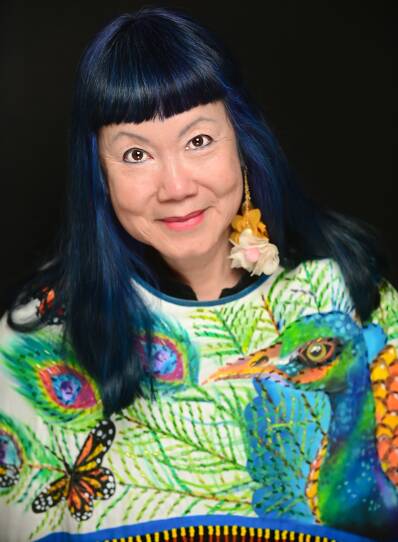Our regular listeners know we are music fans, more than that, huge fans of new music. And more than that, especially huge fans of new music that reflects the diversity and range of our region and the nation. That is why we are big fans of White Snake Projects opera company, because they tick all of those boxes. And that is true of their latest production, a new opera, “To The People Like Us”, an original piece that examines how gentrification affects environmental challenges in Boston.

Cerise Lim Jacobs is the founder and director of White Snake Projects opera company, and Jorge Sosa is a Mexican-American composer and one of the creative minds behind this opera; they joined GBH’s All Things Considered host Arun Rath to discuss their latest works and their community advocacy. What Follows is a lightly edited transcript:
Arun Rath: Cerise, let’s start with you. This opera is centered on climate change as well as diversity, but climate change happens to be what White Snake is looking at directly this season. Tell us more about the thinking behind this.
Cerise Lim Jacobs: Yes, every year we have a theme. So last year, it was voting because of the general election. This year, it’s the very, very important topic of climate. So the whole year is devoted to climate, and we partnered with 826 Boston, which is a fabulous after-school writing program. Their teens wrote the libretto. In regular speak, that means the script. “To the People Like Us”, they pick the team of gentrification and how that impacts climate change. So we’re very proud, excited, and happy to have this very unique partnership with young people who are invested in climate, in their neighborhoods, and this is how they’re gonna express it.
Arun Rath: Jorge, I wanna hear about what it was like working with the kids from 826 Boston. So you think about a composer up in an attic alone with a piano and a score and a pencil, being like, we think of it as a solitary thing. How did you work with these young people? How did it come together?
Jorge Sosa: Well, it’s been an incredible process, and it’s been super interesting for me. When I was brought on board to the project, the libretto was mostly sketched out. So they had a good working draft. And then we had a couple of sessions where we discussed the differences between writing, say, a screenplay or something for like a TV pilot or a theater play, even, and the difference between that and an opera. So we had a couple of really good conversations about that. And I think it helped modify the script. So they went back and they did some edits and they began to think more about songs and more about the words being sung and said to music. And I that was a really interesting process trying to get them to hear it as much as, or imagine it as it will sound. But, you know, I just keep thinking of how important it is to provide opportunities for very young artists to express themselves, to give them a platform. And in terms of opera and classical music, well, what better way to bring new audiences, new young audiences to the theater, you know, by making them complicit, by making co-authors of the work. So I really can’t wait to meet them in person. We did all this process via Zoom, so it’ll be a nice reunion.
Lim Jacobs: Yes indeed, you know the process, Arun, was quite spectacular. These are young people who have never written a libretto. I don’t even think they’ve written a play. And of course, a libretto is so different because you have to structure it with very few words to allow the music to move through the words and to do the work that music is going to do, which is convey the emotional vitality of the piece. So this has been my dream, Arun. It’s been a long time in the making. I’ve wanted to do community art making in a real way, not just this sporadic, okay, let’s just have a concert in the community, so on and so forth.
Rath: You talked about this marvelous way in which the young people learned about what it takes to write a libretto for an opera, what it takes to make a dramatic scene with the music, and move things along. On the other side of things, I’m wondering if there are revelations for you in working with these young people, like when you would get some of these words back if you had some aha moments.
Sosa: Oh, absolutely. Like Cerise was saying, I mean, they are very young artists. They are, you know, 17, barely 18 years old. And so what they write is with honesty and with a freshness that is really lovely to read. And that works really well for opera. So when I saw the numbers, when I saw the Finnish libretto. So I was just really excited for all the great songs, and they are pop songs. I think they are very much influenced by the type of music that they listen to, and they wrote lyrics that would maybe fit those styles. So then on my end it was about how to set to music, how to create music that is hopefully as fresh as the words, and that really communicates that use and that vitality that they bring to the project.
Lim Jacobs: There are a lot of issues that they raise, which someone older like me could never really write with the same zest. For instance, teen love. There’s lots of teen love in this piece, you know, something that they live with. And teen jealousy. And infighting and playground stuff. So it’s very, very true to their lives, which of course is why we always work with people with lived experiences.







